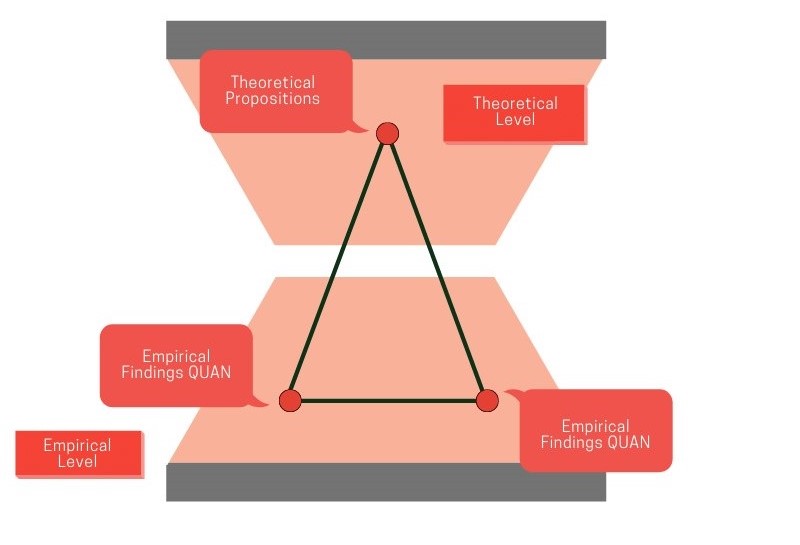How to combine qualitative and quantitative techniques? Expand the scope and analytic power
Qualitative and quantitative researches are designed to deliver different perspectives even for the same problem. Qualitative research gives detailed insights about the study like the people feelings about a product whereas quantitative research involves the math and stats for the same phenomena. Combination of quantitative and qualitative research provides a clear understanding of the problem and yield deeper insights. Mixed research is often encouraged due to high cost and time in many research fields. However, with the advent of computer technologies, conducting a mixed research becomes easier. In this blog, we will discuss about how to combine qualitative and quantitative research methods.
First, let us understand the benefits of combining qualitative and quantitative research. Previously, all qualitative researches are conducted face-to-face and the outcomes are not fully efficient. Later, with the digital technologies, qualitative data can be easily collected and results are highly efficient. Combination of qualitative and quantitative helps to solve many business problems especially in the field of marketing like understanding the customer behaviour. That is, validating the objective or the null hypothesis through qualitative research and expanding its scope through quantitative research analysis.

In practice, combining the qualitative and quantitative research often called as mixed method research which yields clear and deeper understanding of the problem statement. Situation where we require mixed method research is that, say, for example, we are about to investigate the association between the water storage in household and the spread of cholera, then we need both qualitative and quantitative approaches to correctly and efficiently draw conclusions.
There is abundant literature for using mixed method research; however, still there exists confusion in combining the qualitative and quantitative research. Starting from the sampling, data collection, data analysis, and conclusions they differ individually in the conclusions and when using mixed approach the results are more accurate and efficient.
How to combine qualitative and quantitative research
Combining qualitative and quantitative research can be done either at the sampling level, data collection, or data analysis. Mixed method is not actually a mixture of two techniques; it is the method that uses both methods effectively in appropriate situations. Qualitative and quantitative can be combined by giving equal priority in all the stages of analysis either sequential manner, iterative manner or in a certain pattern. For example, in the sampling stage, purposive sampling is used for qualitative research variables and probability sampling is used for quantitative variables to make statistical inference.
In the data collection stage, mostly in the medical and marketing research, a questionnaire is framed involving quantitative and qualitative variables. Quantitative variables take the form like annual income, age, No. of likes or dislikes, etc. Qualitative variables take the form like verbal answers. The results from the two types of research objectives should converge with the result obtained from the statistical analysis services. If they do not converge, they may treat as an empirical study and there is no opportunity to develop a theoretical view point.
In the data analysis stage, one can do qualitative data of qualitative anlaysis, quantitative data of quantitative data of quantitative data analysis, qualitative analysis of quantitative data, quantitative analysis of qualitative data, or analysing quantitative and qualitative data using qualitative analysis or vice versa or simply transform the data into qualitative or quantitative to conduct either one of the data analysis. Transforming the qualitative data to quantitative is often called as quantitizing and transforming quantitative to qualitative is called qualitizing. Quantitizing method reduces the verbal or textual data into items or in numeric manner. Qualitizing method transforms the numeric variables into verbal form. Moreover, the mixed method research is often used by the researchers who are doing their doctoral degree or Ph.D. degree. There are many statistical data analysis services available in market to complete the dissertation.
To sum up, in any mixed method research, the researcher should clearly understand the purpose of mixing both qualitative and quantitative variables and determine the proper analytical technique that converge the outcome of the both method of research to get valid and reasonable conclusions. Mixed methods are used in wider area to expand the empirical and theoretical findings that facilitate the integration of qualitative and quantitative findings. Mixed method research helps the scientist to get clarity about the theoretical propositions and the empirical findings from the data analysis and it helps to develop new theory. Most of the research uses parallel data analysis and compare the findings from analysing qualitative and quantitative data separately at the interpretation stage. Later, sequential data analysis is carried out to substantiate the findings. Sequential data analysis is actually generating or validating the results of qualitative analysis of quantitative data or vice versa. Mixed method are widely used in marketing and clinical industries and there are many online services related to sample size in qualitative clinical and experimental trials, qualitative data collection questionnaires and surveys, online company and customer data collection, market research qualitative data analysis, qualitative business research and analysis analytical methods used in root cause analysis, etc are available to carry out our mixed method research.
In practice, when mixed method is used for single study, priority is given either to the qualitative or quantitative depending on the nature of the problem statement. In such situations, the researcher should determine the how much weightage should be given for the two types of data and is a challenging one especially in the epidemiological or simply clinical or medical research. If there is no equal weightage given to the qualitative and quantitative data, one can analyse them separately and combine both the research at the interpretation stage or in the conclusion. The key point in conducting the mixed method or combining the qualitative and quantitative research is that is should follow the triangulation concept of Erzberger and Kelle (2003) as depicted in the image at the beginning. That is, both qualitative and quantitative analysis should be combined to provide theoretical and logical relationships.
References
- P. BazeleyAnalysing mixed methods data S. Andrew, E.J. Halcomb (Eds.), Mixed Methods Research for Nursing and the Health Sciences, Wiley-Blackwell, Chichester (2009), pp. 84-118
- A. BrymanIntegrating quantitative and qualitative research: how is it done? Qualitative Research, 6 (1) (2006), pp. 97-113
- J.W. CreswellResearch Design: Qualitative, Quantitative and Mixed Methods Approaches, Sage, Thousand Oaks (2003)
- C. Erzberger, U. KelleMaking inferences in mixed methods: The rules of integration A. Tashakkori, C. Teddlie (Eds.), Handbook of Mixed Methods in Social & Behavioural Research, Sage, Thousand Oaks (2003), pp. 457-488
- Ulrika Östlund, Lisa Kidd, Yvonne Wengström, NenehRowa-Dewar,Combining qualitative and quantitative research within mixed method research designs: A methodological review, International Journal of Nursing Studies,Volume 48, Issue 3, 2011, Pages 369-383

 Previous Post
Previous Post